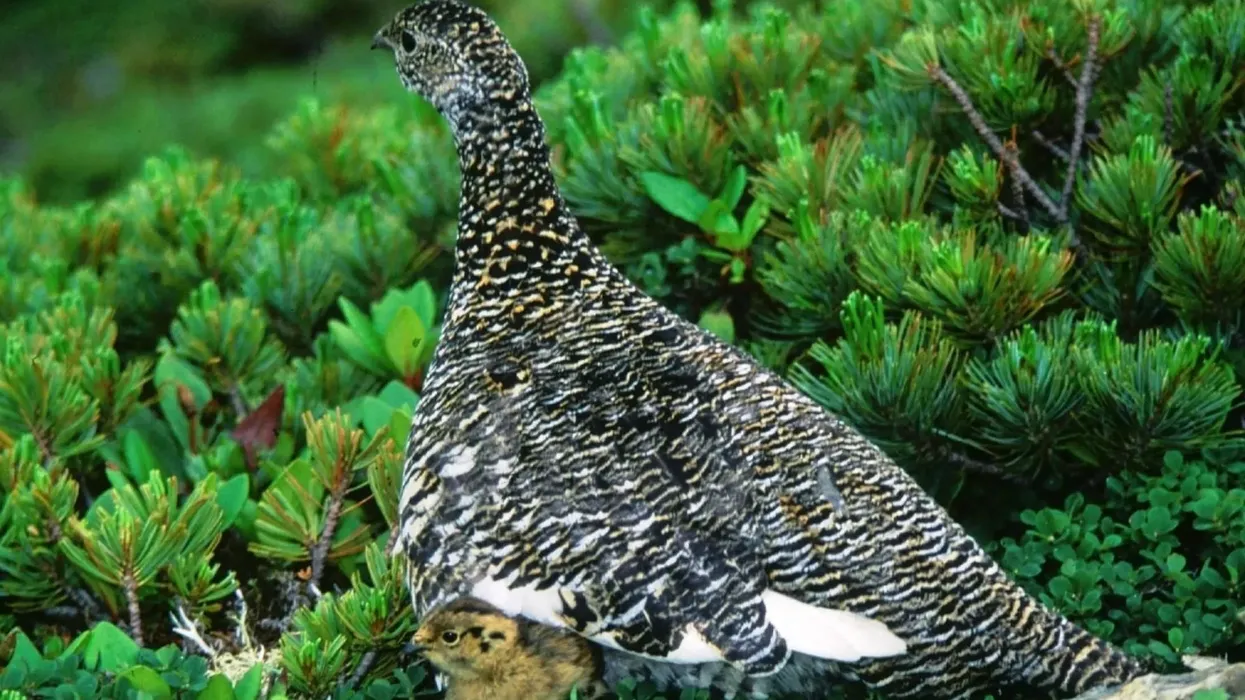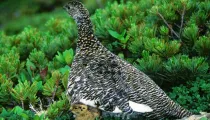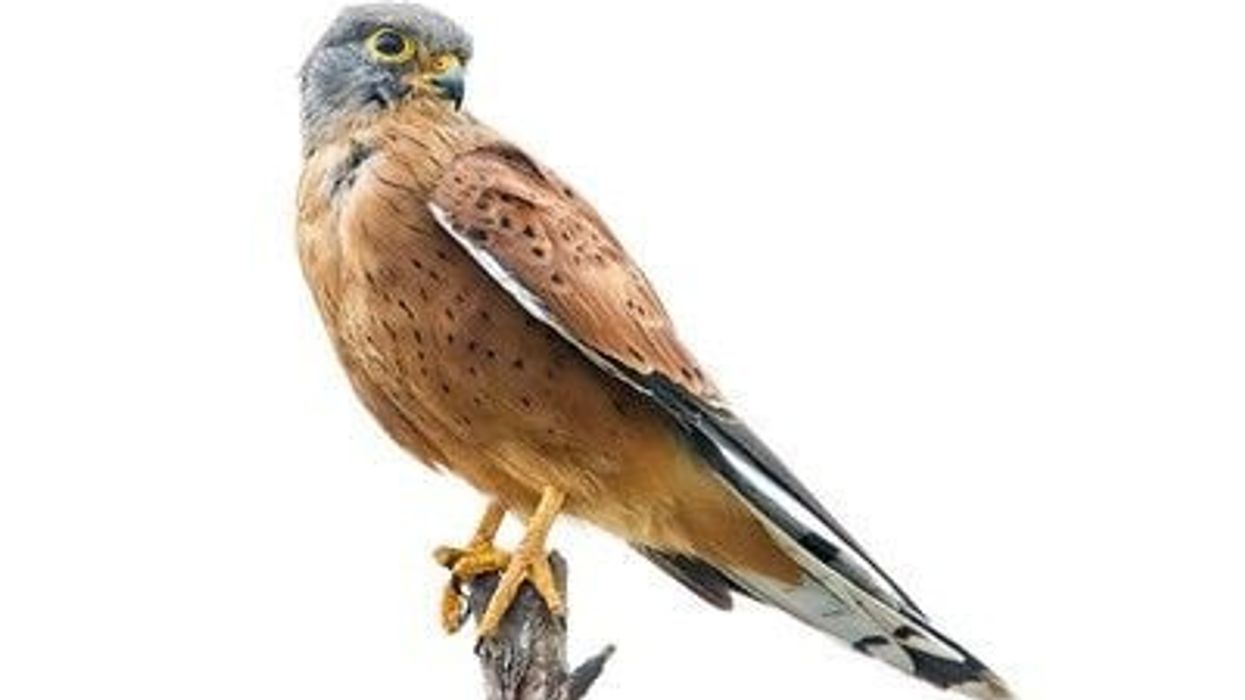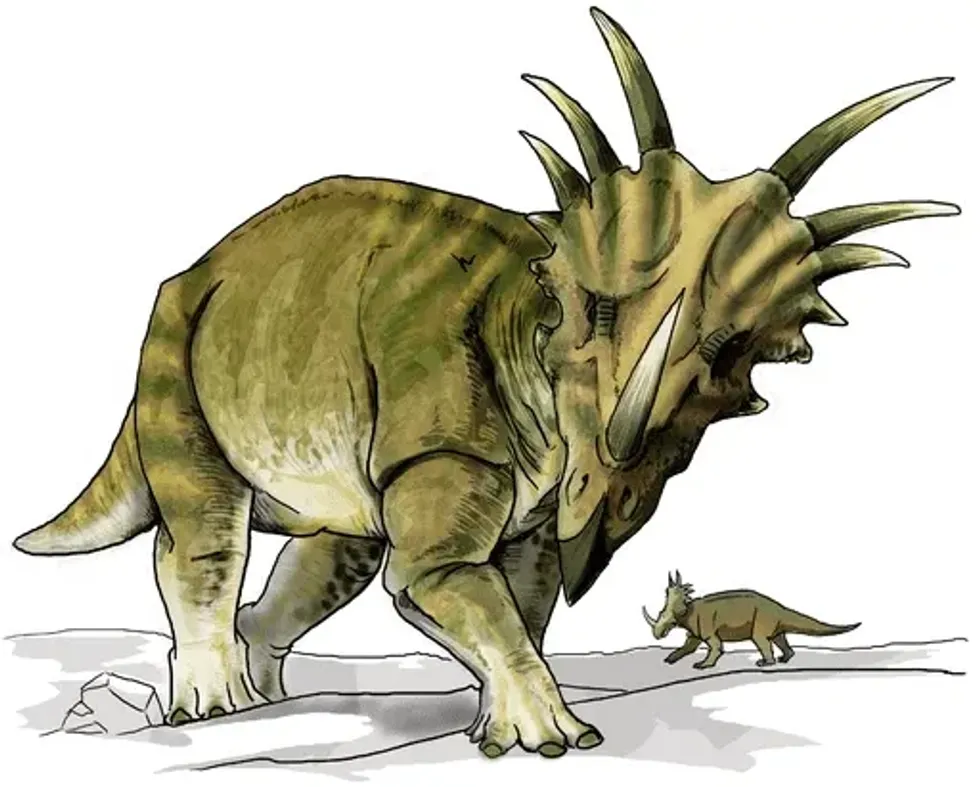Have you ever imagined a bird changing its color according to the season? Yes, there is a species of such kind which can change to completely white.
This is none other than the rock ptarmigan (Lagopus muta) from order galliformes, family phasianidae and genus lagopus.
Male ptarmigans tend to wait for a longer duration as compared to females for shedding white winter plumage at the commencement of the breeding season. This change in plumage is considered a part of the courtship display, but is also responsible for gyrfalcons preying primarily on males.
Rock ptarmigan (lagopus muta) has got some special features that will definitely make you curious. We have some fun and interesting facts on the rock ptarmigan symbolism and behavior. If you are interested in browsing through more birds, you should also check out these willow ptarmigan facts and ptarmigans facts.
Rock Ptarmigan Interesting Facts
What type of animal is a rock ptarmigan?
Rock ptarmigan (lagopus muta) is a game bird that belongs to the Galliformes order in the grouse family. Willow ptarmigan is called ptarmigan in Canada and the UK.
In Japan, it is known by another name, raicho (the thunderbird). Ptarmigan is the official bird of many places including Gifu, Toyama, Labrador and the province of Newfoundland and the territory of Nunavut. It is white in color in winter and brown in color in summer.
What class of animal does a rock ptarmigan belong to?
Rock ptarmigan is a medium-sized game bird that belongs to the Phasianidae family. It comes under Galliformes order in the grouse family. It is a sedentary species. It is seasonally camouflaged as its feathers molt from white in winter to brown in summer. This species is known as ptarmigan in the UK and Canada.
How many rock ptarmigan are there in the world?
The population of rock ptarmigan is estimated to be more than eight million, according to worldwide distribution estimates. These North American birds are under the least concern conservation status even though their population is decreasing slightly across their habitat in rocky tundra, alpine summit regions, maritime islands.
Where does a rock ptarmigan live?
A rock ptarmigan habitat is in timberlands in mountains and bleak tundra of northern coasts. These breeding birds are spread in the Arctic Cordillera and spread across Subarctic Eurasia and North America on the rocky mountainsides.
A small population of rock ptarmigan bird species is found in the habitat in the Russian High Arctic. This breeding species is also widespread in continental Europe.
What is a rock ptarmigan habitat?
A rock ptarmigan usually lives in the tundra and alpine summits. During summer, it lives on dry, open tundra with rock outcrops.
It occupies all open habitats on the island. In winter, most of them tried to remain in summer habitats, whereas some moved to shrubby areas in northern forest. It breeds across the Arctic and Subarctic Eurasia and North America on rocky mountain sides and tundra.
Who do rock ptarmigan live with?
Rock ptarmigan is a migratory species and migrates in large flocks. These birds continue to live together in large numbers for protection. Sometimes these flocks are separated by the sexes.
How long does a rock ptarmigan live?
The average lifespan of a rock ptarmigan is around 2-4 years in the wild. It may vary according to the habitat.
How do they reproduce?
Rock ptarmigan reaches sexual maturity in about six months. During spring, male rock ptarmigan display to females and show aggression towards the other males using their combs; the size of the comb and the ability to mate correlates. The sight of male rock ptarmigan fighting for female attention is a spectacle to behold.
The feathers of the male remain white until the mating is complete, which is a huge risk. Usually, the nests are built on rocky areas and less vegetated tundras.
Around 6-13 chicks are born. Females molt their feathers to summer color, that is, brown for the mating season. These birds are difficult to spot in the nest due to their camouflage capacity.
What is their conservation status?
Rock ptarmigan has the least concern status. Their population is in significant numbers. The worldwide estimate of their population is more than eight million individuals. Hence, these breeding birds do not face any extinction even though the population of the species is slightly decreasing.
Rock Ptarmigan Fun Facts
What do rock ptarmigan look like?
Rock ptarmigan is a game bird that belongs to the Galliformes order in the grouse family. Rock ptarmigan summer plumage is of brown color while the rock ptarmigan winter plumage is of white color.
In males, the upper parts have grey color and the wings are white. During the winter season, the plumage turns pure white. The eye line and outer tail feathers still remain black.
It has a black eye stripe and also a slightly smaller bill. Males have a black streak from beak to eye, a scarlet comb near the eyes, and are generally pale on the upper body in fall
How cute are they?
Rock ptarmigan is a medium sized bird. These birds are cute in appearance and sound. They have the ability to change the color of their feather, which really sounds cool, isn’t it?
How do they communicate?
A rock ptarmigan communicates using sounds. Males are highly vocal during spring as a display for the females and give a snoring kurr-kurr rock ptarmigan call.
How big is a rock ptarmigan?
Rock ptarmigan range of size is 13-14 in (33.0-35.5 cm) with a wingspan of 21-24 in (53.3-60.9 cm). It’s 10 times bigger than small birds like sparrows. Young rock ptarmigan is slightly smaller in size than a willow ptarmigan but larger than a white-tailed ptarmigan.
How fast can a rock ptarmigan fly?
As a rock ptarmigan is a migratory species, it can fly faster which allows it to explore a wider region. During aerial courtship rituals in this species, there is a fast forward flight where the tail is fanned out.
How much does a rock ptarmigan weigh?
On an average scale, a rock ptarmigan weighs around 15.5-22.6 oz (0.43-0.64 kg). The rock ptarmigan species is smaller than a willow ptarmigan.
What are their male and female names of the species?
Both male and female sexes do not have any particular name. Sexes of these breeding birds are known as male rock ptarmigan and female rock ptarmigan. The male rock ptarmigan takes longer than the female rock ptarmigan to change the white winter plumage to the brown summer plumage.
What would you call a baby rock ptarmigan?
A baby rock ptarmigan is usually called a chick. During a breeding season, 6-13 chicks of this species are born from rock ptarmigan eggs.
What do they eat?
Rock ptarmigans are usually ground feeders. They are known to be omnivores in terms of food habits and consume plant parts as well as a variety of insects. Adult ptarmigans are usually vegetarians feeding on plant buds, leaves, flowers, berries and seeds.
Crowberries, dwarf birch, alder, willow are the major food sources. Young chicks feed heavily on insects, spiders and snails. Their main predators are arctic foxes and golden eagles.
Are they dangerous?
A Rock ptarmigan is a wild bird. They do not pose harm and are not considered dangerous.
Would they make a good pet?
No, they do not make a good pet. Rock ptarmigans are wild animals that are adapted to cold environments. In many places, it is illegal to keep ptarmigans as a pets
Did you know...
The Arctic Circle is mostly very cold. In order to withstand cold temperatures and to prevent frostbites, rock ptarmigans have feathered feet.
It helps to get some warmth. In addition to feathered feet, they also have a covering of feathers on the nostrils, which act as a scarf. The air gets warm while entering through it before going to the lungs.
What specific characteristics allow the rock ptarmigan to survive in the tundra?
The rock ptarmigan have a unique ability to change their color according to the seasons. They change from brown in summer to white in winter. The three best adapted species that can survive winter temperatures include rock, willow, and white tailed ptarmigans.
They have feathers in their feet which act as snowshoes, increasing surface area and warmth. They also make adjustments in their diet in order to survive cold. During the nightfall, they burrow into the snow, creating cozy waves.
Why do rock ptarmigan feathers change color?
Rock ptarmigan are seasonally camouflaged. Their feathers molt from brown color in summer to white color in winter. Changing color helps them to blend in with their surroundings, thereby helping them to be safe from predators.
Here at Kidadl, we have carefully created lots of interesting family-friendly animal facts for everyone to discover! For more relatable content, check out these morepork facts and ladder backed woodpecker facts.
You can even occupy yourself at home by drawing one on our rock ptarmigan coloring pages.









